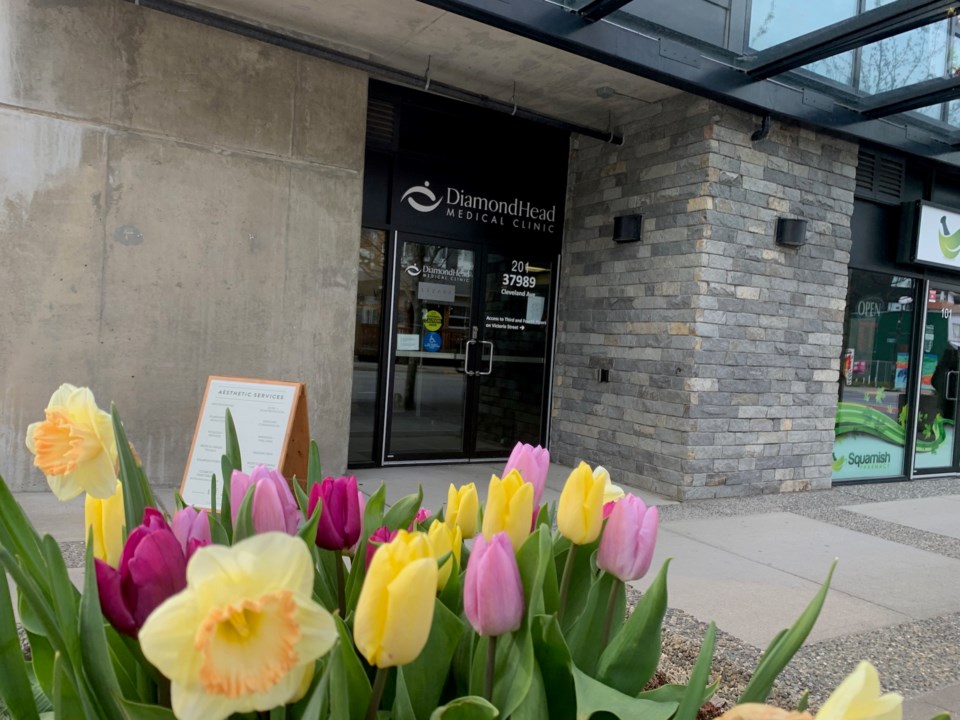"All of us have a breaking point."
It was one of the lines in a letter sent by the doctors ofto Health Minister Adrian Dix.
The letter was a cry for help from the physicians, who have been wrestling with significant difficulties in attracting and retaining new doctors to the clinic.
The end result has been that, by their estimate, there are thousands of people in �鶹�����who have no family doctor. As the town grows, thousands more will encounter this problem.
"We're close," said Dr. James Cranston, when speaking to The �鶹����� on April 21. He was referring to the breaking point the clinic's doctors had mentioned in their letter to the minister.
"There is a small chance that we could dissolve the clinic entirely. I don't think that's going to happen. But almost every other physician in this clinic has another source of income that actually pays them well. And, you know, in my case, for me, emergency medicine really allows me to do family practice. You know, I can accept that I'm not making as much here. And I can support that with emergency medicine. For other people, it's obstetrics, anesthesia, hospital work [and] working out of town doing various things."
The key issue is that the financial situation faced by family doctors has made it very hard to attract new physicians, he said.
There have been several retirements from the clinic, and finding replacements has been an arduous task.
There were 13 doctors three years ago, but the clinic is now down to eight.
Attempts to attract new doctors have been very challenging.
The average new doctor will have about $200,000 in student loan debt, Cranston said. On top of that, they face high overhead and living costs in Squamish, where real estate prices have put a new property out of reach of newly-graduated doctors.
"So the compensation has moved to a point where we have not been able to recruit people to move to �鶹�����and join a practice," said Cranston.
The physicians of Diamond Head bought the space their practice resides in. A new doctor would have to buy a share of the unit and then find a place to live in a town where the valuation of a house has reached about $1.4 million.
"We've had five people leaving our clinic, which means that the remainder of us have to keep buying real estate from them," said Cranston. "And we're not able to do it anymore. But unfortunately, we can't get new people to buy it, which is what we've always done in the past when somebody leaves. Somebody [else will come] and buy it. But there's nobody left."
The doctors of Diamond Head are considering selling the clinic and hoping to strike a deal that would allow them to lease the majority of the clinic back, he said.
This will help remove one barrier, Cranston said, but it does not fix the underlying problem that many doctors aren't going into family practice anymore.
Doctors in Diamond Head work in other areas to supplement their income, and many new graduates would rather pass on family practice and work in an area where they are better compensated.
"80% to 90% comes down to money," said Cranston. "You can look up what I earned in the blue book and it looks pretty good. But then subtract from that many, many tens of thousands of dollars in overhead…huge overhead for most [general practitioners], you know, 30% to 40% of their money's lost overhead."
On top of that, the rising cost of living in �鶹�����takes another big bite out of that cash, and the end result is that there's little incentive for a new graduate to set up a practice in town.
What the provincial government needs to do, Cranston said, is provide assistance to family doctors who provide longitudinal care — in other words, doctors who commit long-term to take a load of patients.
"So not family doctors that work for TELUS doing health doing telehealth, not family doctors that work in walk-in clinics, but family doctors who actually take on a patient load that they take responsibility for," Cranston said.
The best way for the province to help out is to provide coverage for the overhead costs that general practitioners face, he said. It could be a number based on the number of patients and the complexity of their cases.
"The number won't be small if they want to turn things around. They've just let things go for too long now," Cranston said.
The best way for locals to help doctors is to write to their MLA and the Ministry of Health, he said.
As of April 21, Health Minister Adrian Dix, to whom the clinic's letter was addressed, had not responded, Cranston said.
Ministry to consult
However, The �鶹����� sought comment from the and was issued a written statement.
The statement said the province is aware of the significant challenges across B.C. related to the sustainability of family practice clinics.
"The Ministry is committed to the establishment of a [primary care network] in Sea to Sky — Whistler and �鶹�����— to support the community with greater team-based primary care resources," the statement read.
The statement also said the ministry would consult with the community about potential short-term solutions — including access to additional resources — until the primary care network is established.
The province defines a primary care network as a set of partnerships between the Divisions of Family Practice representing B.C.'s family physicians, the regional health authorities, the First Nations Health Authority and local community partners, along with other community providers such as nurse practitioners.
The intention of these networks is to streamline and co-ordinate patient services.
Please see the doctors' full letter to the provincial Health Minister below.
on Scribd




